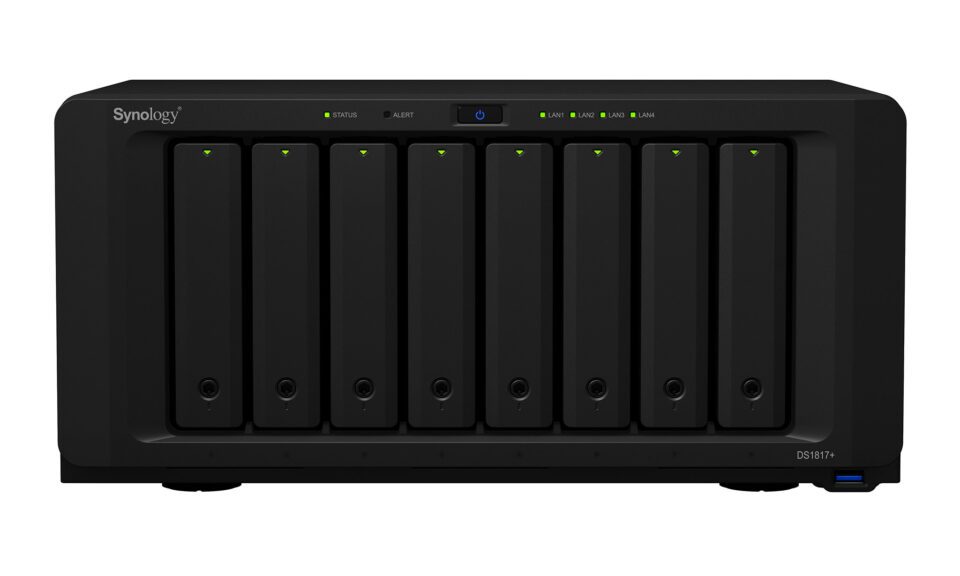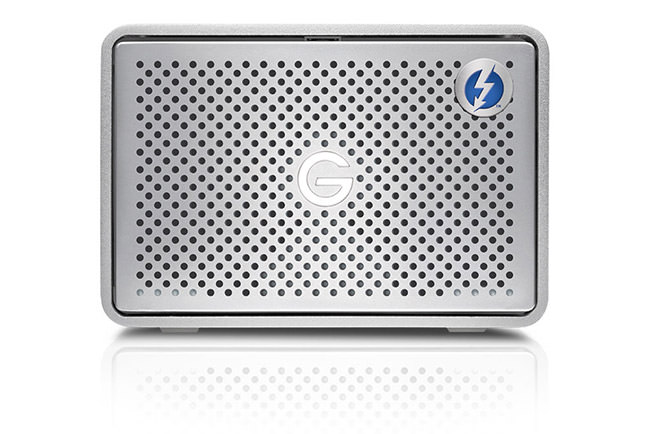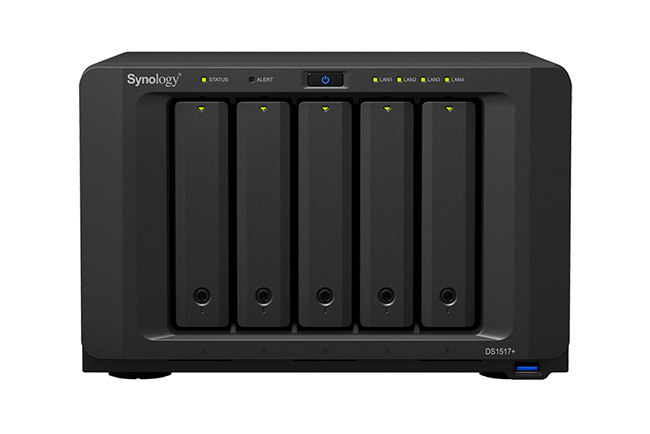Many photographers and videographers often rely on using local storage within their computers to store media files. Once their computer drives fill up, they often end up purchasing external hard drives to offload some or all of the data, segregating the data and making it difficult for quick access and backup. Others choose dedicated storage arrays that handle all the data in a single location, albeit at a higher cost and sometimes questionable results. For a person who is not technology-savvy, choosing a proper storage solution can be a difficult task. With so many different DAS (direct-attached storage) and NAS (network-attached storage) solutions on the market, one can get quickly confused, ending up with many storage issues. Since mismanaging storage can potentially lead to data loss and other problems, it is always a good idea to revisit your storage needs and choose the best solution that will not only address the storage requirements you have today, but also help with growi ng your data in the future. In this article, we will go over different storage solutions in detail, identify pros and cons of each and hopefully help you in selecting the best storage solution for your needs.


Year after year, the resolution of both recording and output devices is increasing at a significant rate. While a few years back we used to deal with cameras that had at most 8-12 megapixels (MP) of resolution and typical monitors / TVs did not exceed 1080p, things have certainly changed since then. Common camera resolution has been bumped up to 20-24 MP now (with high resolution full-frame cameras pushing 50 MP), whereas most electronics stores don't even stock 1080p screens anymore, with both TVs and monitors getting pushed to 4K and higher resolution. As a result of these changes, media size has also seen a significant increase. In just a matter of a couple of years RAW files quadrupled in size from 8-12 megabytes (MB) to 40-50 MB on average when shooting with 36 MP+ digital cameras, and 4K video presents a new level of storage challenges, not just in terms of storage space, but also in terms of storage speed to keep up with the large amount of flowing data. While you can do your best to reduce your backup needs, the larger files and the additional data you have to deal with on a daily basis do not make it easy to keep your storage needs minimal.
All this data growth makes it difficult to keep media stored on a single laptop or a computer, so most photographers and videographers end up purchasing large capacity external drives where they offload data. Once those drives fill up or a new year rolls in, they typically buy more drives to accommodate their new data, ending up with a collection of external drives that become a nightmare to manage. Since the data is segregated across many different drives, accessing older data becomes a hassle, performing routine backups gets difficult and the sheer number of different devices with different capacities and connectivity options make it difficult to manage data as a whole. And let's not forget about the typically miserable speed of accessing data from external devices. Sounds familiar? It sure does to me, as I used to do it myself in the past. And I know a number of professional photographers who still rely on such workflow practices.
What if there was a way to streamline the process by putting all the data into a single location? Wouldn't it make it easier to quickly access and manage the data? That's where storage arrays come into play.
2) What is a Storage Array?In simple terms, a storage array (also known as a disk array) is a dedicated box that can accommodate multiple storage drives (typically hard drives or SSD drives) to store and access data. The simplest and the least expensive storage arrays typically accommodate two to four drives, whereas higher-end storage arrays can accommodate five or more drives and offer fast speeds, more connectivity options and might even run their own operating system to handle different native and third party applications. Unlike typical local and external storage, higher-end storage arrays often have built-in error-detection and redundancy features to reduce the potential for data loss, making them more reliable and scalable in the long run.
Below are the major storage architectures you might come across today:


Depending on the architecture, storage arrays can be simple and can also be very complex. Simple, user-friendly storage arrays are typically going to be the most affordable, giving very few configuration options to quickly get started, whereas storage arrays designed for small to medium-size businesses can have many configuration and connectivity options, making them more difficult to implement and manage.
3) DAS vs NASLet's take a look at the advantages and disadvantages of both DAS and NAS:
DAS Advantages:
DAS Disadvantages:
NAS Advantages:
NAS Disadvantages:
As you can see, one is not necessarily better than the other – both DAS and NAS devices and storage arrays have their uses and their pros and cons. So before you make your purchase decision, you should understand them fully and be ready to deal with the potential issues you might encounter.
4) DAS and NAS Speed ConsiderationsWhile direct-attached storage arrays are capable of delivering exceptional speeds (provided that one uses a fast interface such as USB 3.1 or Thunderbolt, as stated above), the biggest speed bottleneck of network-attached storage is the network. With most homes and offices wired with older CAT-5e cabling that limits network throughput to 1 Gbit, running anything faster not only requires expensive switches and network cards, but also new cabling, which can be very cost-prohibitive to replace.
One could argue that a DAS array would be a better solution, since it can handle a lot more throughput. However, NAS arrays have a lot of advantages over DAS arrays, especially in a multi-user environment. With a NAS device, your media can be accessed from any computer on your local area network (LAN) and if you need access to your files when traveling, you can download your data over the Internet as well, without having to keep one computer running all the time. NAS consumes a lot less power than a DAS connected to a computer and one can use all kinds of native and third party apps to get more functionality from a NAS, such as automated computer backups, automatic replication to other NAS devices and ability to stream media to home entertainment devices. Lastly, most NAS arrays are built to work 24/7 and are self-managed, whereas consumer-grade DAS arrays are usually not.
For these reasons, I highly prefer NAS to DAS as my storage solution to store photographs and video. While I have been quite happy with my Synology DS1815+ for the past few years, unfortunately, I cannot copy media faster than 100-120 MB/sec from a single computer due to the 1 GbE network interface limitation, even with link-aggregation enabled (link-aggregation can only handle more data when data is transferred over multiple computers). And since I often work with large RAW / TIFF files and video, plus my storage needs are only increasing overtime, the network bottleneck has definitely been a limiting factor. For this reason, despite the high cost of implementation, I have already moved up my network to 10 Gbit Ethernet and started migrating my data to the latest NAS models from QNAP and Synology with 10 GbE network interfaces.
So if you have been trying to decide on a NAS solution, do keep the above-mentioned network bottleneck issues in mind and make sure to plan for the future. If you work with 4K+ video content or have specific speed requirements and you do not need more than one machine accessing your storage, a high-performance DAS might be a better solution. And if you have any interest in pursuing a 10 Gbit Ethernet NAS setup, I will be working on a separate article with all the details next.
5) The Need for Larger and Faster StorageThankfully, with the growth of photography and videography material, storage manufacturers have also been working on increasing storage capacity. If a few years ago we were limited to 4 TB drives, there are now 10 TB consumer-grade hard drives available. Although the cost per GB still remains high, M.2 NVMe and SSD drives are also seeing increases in capacity, with 4 TB+ options already available on the market. As a result, we now have storage arrays that can deliver extremely large capacity volumes capable of handling a lot of data. And with the added benefit of creating large caches based on M.2 and SSD drives, one can push incredible speeds on such arrays as well. Lastly, thanks to the mix of different form factors and types of storage devices, we are now beginning to see tiered storage coming to consumer market, which is very exciting!
Let's now take a look at some of the best storage solutions available on the market that we recommend to our readers.
6) DAS RecommendationsLet's get started with the DAS storage arrays that we recommend to our readers. If you are just starting out and you do not want to spend a lot of money on an external drive, I would recommend to get a two-bay DAS / external drive. You can buy those pre-configured with capacities up to 20 TB (in RAID 0 / stripe mode). Personally, unless you know what you are doing and you have your backup fully figured out and in place, I would not recommend to run any storage in RAID 0 configuration. So as soon as you receive yours, I would change it to RAID 1 (mirror) mode, so that if one of the drives were to fail, you would still not lose the data. However, it is important to point out that RAID can never be considered to be a backup, so don't just assume that your data is safe if you run a simple two disk array in mirror mode. Always make sure that you have a solid photography backup workflow in place. You could still lose all of your data if two disks were to fail at the same time, if th e DAS was stolen or some other disaster took place.
So which specific DAS units would we recommend? Here is our list of favorites:
For the past few years, I have been relying heavily on Synology NAS arrays, which deliver superb performance, sleek and easy to use graphical user interface and excellent app ecosystem. QNAP storage arrays are new to my home as of this year and they also seem to be very solid, reliable and in some cases even offer more features than Synology. Although I have used a number of different NAS solutions in the past from a number of different manufacturers such as Drobo, Netgear and Promise Technology, I have had either bad or very mixed experience with them, bringing Synology and QNAP to the top of my list of favorites:
I will be publishing the review of the QNAP TVS-882T later this week, with the Synology DS1817+ to follow.
8) Hard Drive RecommendationsWhen it comes to selecting hard drives, there are a number of great options out there. Always make sure to select drives that specifically say "NAS" on them, since they are built for 24/7 operation. Regular drives will work, but their failure rates might be much higher and that's not what you want when continuously running drives. If you can get a hold of enterprise-grade NAS drives from any manufacturer, those would be the most reliable. However, they are also quite pricey compared to regular NAS drives.
Personally, I have been a huge fan of HGST NAS drives. I have been using them for 5-7 years now and I have never seen one fail. My personal pick would be the HGST 8 TB 7200 RPM NAS drive, which is what I use on my primary storage. They are very fast drives and they are my top choice for NAS storage. While my luck with Seagate has not been that great, the new generation Seagate IronWolf drives look great. The highest capacity drive at the moment is the Seagate 10 TB IronWolf 7200 RPM NAS drive, which is what I would pick if you want to maximize total storage space.
Western Digital also has some great options. The WD 10 TB NAS drive is limited to 5400 RPM, so it should be quieter and not as hot as 7200 RPM drives. It promises the same 210 MB/sec sustained data transfer rate as the IronWolf drives, although I am sure there will be differences when it comes to random IO, with 7200 RPM drives winning over. If you want to step up to 7200 RPM, the only option from WD is enterprise-grade WD 10 TB Gold 7200 RPM NAS drive, which is going to be more reliable in the long term.
Hope you found this article useful. If you have any questions regarding storage, please let me know in the comments section below!
Source: Storage Considerations for Photographers
No comments:
Post a Comment